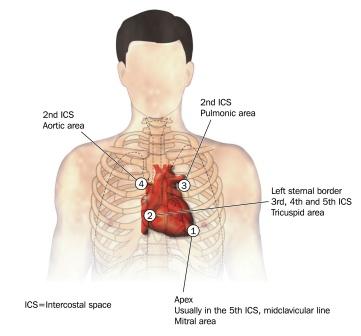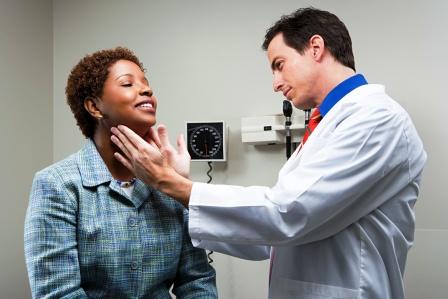Charaka Trividha Roga Vishesha Vijnaniya Vimana: 4th chapter
The 4th chapter of Charaka Samhitha Vimana Sthana is Trividha Roga Vishesha Vijaninya Vimana. It deals with usage of Aptopadesha (scriptural knowledge), Pratyaksha (patient examination) and inference in patient and disease examination.
We shall now explore Trivodha Roga Vishesha Vijnaneeya adhyaya. This chapter deals with determination of three Factors for understanding the disease characteristics”. Thus said Lord Atreya [1-2]
Table of Contents
Three sources of knowledge
There are three means to know about disease features:
Aaptopadesha – authoritative instruction, preachings of saints
Pratyaksham – direct observation and
Anumana – inference. [3]
Aptopadesha
Aptopadesha – preaching of saints / authoritative instructions are the teachings of Aptas (persons who are reliable and truthful).
Apta Lakshana: features of truthful reliable person:
Aptas are free from doubts and their memory is unimpaired (Avitarka Smruti), i.e. they know things in their entirety by determinate experience. They see things without any attachment or affliction.
Because of these qualities, their teaching is authentic. The statements made by intoxicated, mad, illiterate and attached persons are not to be considered as authoritative.
Pratyaksha and Anumana Pramana
Pratyaksha or direct observation is that which is comprehensive by an individual through his own sense organs and mind.
Anumana or inference is the indirect knowledge acquired by reasoning. [4]
Patient examination
Patient examination with 3 Pramanas:
At first, one should examine various aspects of diseases with the help of the above 3 Pramanas (sources of knowledge). This helps to get accurate disease knowledge.
First knowledge is gained by Aptopadesha (by reading text books and getting to know theoretical aspects of disease). After that, disease knowledge is gained by Pratyaksha – direct observation and then by Anumana – inference.
What is to be examined by direct observation, and inference unless something is Prima Facie stated? Therefore, a thing can be examined in two ways, viz, “Direct observation” and inference or in three ways which include Aptopadesha in addition. [5]
Different aspects of the examination of diseases:
Learned physicians described the following features) of each and every disease:
Prakopana – Provoking factors, viz, dry food intake etc.
Yoni – Source of Doshas involved
Utthana – Mode of manifestation.
Atma – nature and seriousness of disease
Adhishtana – site of disease manifestation
Vedana – Pain
Samsthana – Symptoms
Association with specific touch, colors, tastes and smell
Complications
Association with symptoms of aggravations, maintenance and abatement
Prognosis
Names
Concomitants and
Prescriptions and prohibitions in the treatment, e.g prescription of fasting and use of digestive drugs, and prohibition of day sleep and bath in fever.
One can understand the above mentioned characteristic features of diseases from authorities’ testimony. [6]
Factors examined by Pratyaksha
Factors to be examined by Pratyaksha – direct observation :
The doctor should examine the patient with all his sense organs except tongue.

The following is examined by auscultation / ears –
antrakujana – Gurgling sound in the intestine
sandhisphutanama – Cracking sound in the joints including those in the fingers
Voice of the patient and
Such other sounds in the body of the patient like the sounds of coughing and hiccup
Factors examined by eyes – Chakshu Indriya:
The following is examined visually:-
Color, shape, measurement and complexion
Natural and unnatural states of the body and
Others which can be examined visually like signs of the diseases and luster.
Examination of taste
Tastes of the various factors in the body of the patient are however be ascertained by Anumana and not by direct observation (Pratyaksha). Therefore, the taste in the mouth of the patient is ascertained by interrogation. Impairment of the taste of the body is inferred when lice etc., go away from the body.
Use of animals to examine body fluids:
Sweet taste of the body can be inferred when flies are attracted towards the body. In the case of bleeding from the body, if there is a doubt about the nature of the blood, it is resolved by giving the blood to dogs and crows to eat. Intake of the blood these animals indicates that patient’s blood is vitiated by Pitta Dosha (Raktapitta)

Patient examination by smell and touch:
Normal and abnormal smell of the entire body of the patient is examined by nose. Similarly the normal and abnormal touch of the patient is examined by hand. Thus the examination of a patient by direct observation, inference and Aptopadesh is described. [7]
Factors observed by Anumana
Factors to be observed by Inference – Anumana:
The following among others are the factors to be observed by inference:-
Factors to be observed by Inference – Anumana:
Agni (digestive fire) from the power of digestion
Strength from the capacity for exercise
Condition of the senses, viz. auditory facility faculty etc. from their capacity to perceive the respective objects, viz sound etc.
The min perceptions are observed by its activities,
Knowledge of a thing from proper reaction to it,
Rajoguna from attachment to woman etc;
Moha (unconsciousness) from lack of understanding
Anger from the revengeful intentions
Grief from the sorrow feelings
Joy from happiness, viz, indulgence in dancing, singing, playing musical instruments and remaining in festive mood.
Priti (Pleasure) form satisfaction which is reflected by happiness of face, eyes etc.
Fear from apprehension
Dhairyamavi dena – Courage from strength of mind even in dangerous situation.
Energy from his initiative in difficult situations
stability of the mind from the avoidance of any mistake
desire from request
intelligence from the power of comprehension of scriptures etc
Recognition from the recollection of the name
Memory from the recollection of the name
Modesty from bashfulness
Liking from habitual intake of things
Dislike from disinclination
Upadhimanubandhena – Deception from subsequent manifestations
Courage from firmness
Obedience from compliance with orders
Age, liking, homologation (Satmya) and cause of the disease from the stage of the life, habit, conductionciveess and characteristic features of pain respectively.
Age of the patient can be determined by the stage of his life.
Desha is determined by habits
Disease curability is guesed by symptoms
The curability of disease is inferred by hidden symptoms.
Quantity of Dosha vitiation is inferred by amount of apathya – unsuitable diet and lifestyle
Arishta lakshanas give a hint toward life expectancy
Promotion of Sattvika qualities of the mind from the absence of its impairments, viz, attachment, envy etc
Softness or chronic symptoms of Grahani, dreams, desires for food etc., likes and dislikes, happiness and unhappiness etc, are known by Prashna – interrogating the patient. [8]
Thus it is said: – The wise should properly understand a disease by the Aptopadesh, Pratyaksha and Anumana – inference.
As far as possible all factors is discussed in their entirety. After examining the disease by Aptopadesha etc., the physician should obtain knowledge regarding the nature of disease and the therapies required thereafter.
One who is well versed in specific nature of disease and therapies, therefore, seldom fails to act properly. It is only he who acts properly reaps the results of proper action (success).
When a physician who even if well versed in the knowledge of the disease and its treatment does not try to enter into the heart of the patient by virtue the light of his knowledge, he will not be able to treat the diseases. [9-12]
To sum up:-
There methods for the determination of disease, factors to be understood by the instruction of Aptas (sages), by Pratyaksha and Anumana are explained in detail in this chapter. [13-14]
Thus ends the 4th chapter Trividha Roga Vishesha Vijnaniya of Vimana Section of Agnivesha’s work as redacted by Charaka. [4]







